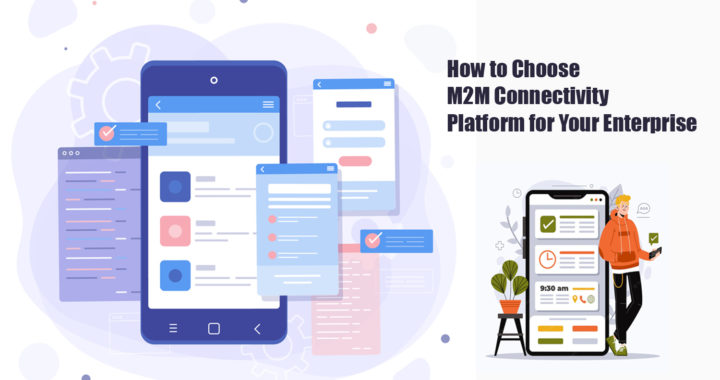These days, many businesses are using M2M connectivity platform for their businesses, boosting many IoT implementations. With so many options available, researching and selecting the best one for your personal needs may be difficult. For your convenience, we’ve put up a list of connecting alternatives.
Importance of selecting the right IoT connectivity for M2M connectivity solutions?
On the market, there are several options for internet of things connectivity provider services. Customers, on the other hand, are often unaware of what is offered and what the benefits are, which creates a selection barrier.
Because the connection is a vital component of an end-to-end IoT solution, clients must make one of the most significant decisions in their IoT launch strategy: which M2M connectivity solutions to use. The most important topic to consider is how the connected product and the data it generates will be used and how they will provide value to the company and its consumers.
The client can move to determining technological needs and selecting the most appropriate solutions once we have defined both the strategic and financial/budget objectives as well as risk. Every use case has unique requirements, which translate into distinct technical requirements that define the best connectivity option to deploy.
Concentrate on your primary business:
To include an M2M connectivity platform, businesses must be able to comprehend and implement a variety of domains, such as embedded solutions, mobile app development, and the internet space. Instead of spreading its skills for trivial chores and measures, an excellent M2M platform would aid the company is focusing on essential business functions and improving on innovation. In most platforms, there are two sub-parts that handle the majority of non-core-business tasks:
· The Connected Device Platform (CDP) enables businesses to manage their cellular-connected equipment. These can interact with current BSS and OSS platforms and enable connection monitoring, real-time charging, and policy control.
· Application enablement platforms (AEP): These aids in the reduction of total application development time by abstracting common functionality across domains onto a platform.
Businesses should select the greatest mix that meets their needs and allows them to concentrate on their primary business solution.
Generate ROI in the first year:
A firm must consistently minimize expenses and look at direct and indirect loops to achieve positive returns to justify its investment. The yearly cost of sustaining platform software might be anywhere between 25 and 75 percent of the initial expenditure. As a result, in order to secure a consistent short and long-term return on investment, businesses must integrate M2M initiatives with the basic framework.
It is not always evident how M2M investments will reflect returns in the case of many firms. Typically, businesses want to do a pilot test to determine market acceptance before launching a full-fledged product. This two-phased strategy may work effectively for businesses: pick a platform that allows for speedy prototyping, then decide if the existing platform can meet the demands or explore alternatives when market input begins to filter in. This reduces the initial expense and allows businesses to determine whether or not they need to establish their own platform.
To back up the bottom line, consider the following:
When choosing an M2M platform, businesses should make sure that it not only serves their long-term business goals, but also that it devotes time, resources, and income to delivering value to their bottom line in a cost-effective manner.
Businesses must evaluate both the initial investment and ongoing operating costs. Starting with off-the-shelf platforms is usually a good idea. Internet of things connectivity provider services will need to decide whether it is appropriate to migrate to owning the platform based on their scale and business growth.
Maintain scalability:
As a firm grows, its infrastructure will inevitably increase as well. Businesses should consider an M2M connectivity platform that not only meets their short-term commercial goals but also their long-term goals. To prevent a situation where in-house infrastructure is unable, incompetent, or insufficient to support the expanding size of a business, organizations should guarantee that the M2M platform is flexible enough to scale with the business possibilities.
This is especially true for businesses looking to convert an existing platform into an M2M platform. However, the amount, velocity, and diversity of data that any good scale M2M system generates may render conventional platforms unsuitable.
Is the company well-capitalized enough to invest in big data storage? What level of competence does it have with embedded applications? Is the company prepared to deal with the complexities that several network subscriptions may bring? There is a slew of issues that businesses must consider before investing in an M2M platform. While the following are general industry guidelines that businesses should follow, it’s crucial to remember that one plus one may not equal two for another. To put it another way, rather than harping on the ‘correct’ M2M platform, it’s always better to go for the ‘ideal’ one, because one size does not fit all.
Read more:
How is the M2M Connectivity & Market Shaping Out for Telecom Providers?
Leverage Machine to Machine Connectivity to Improve IoT Functionality

